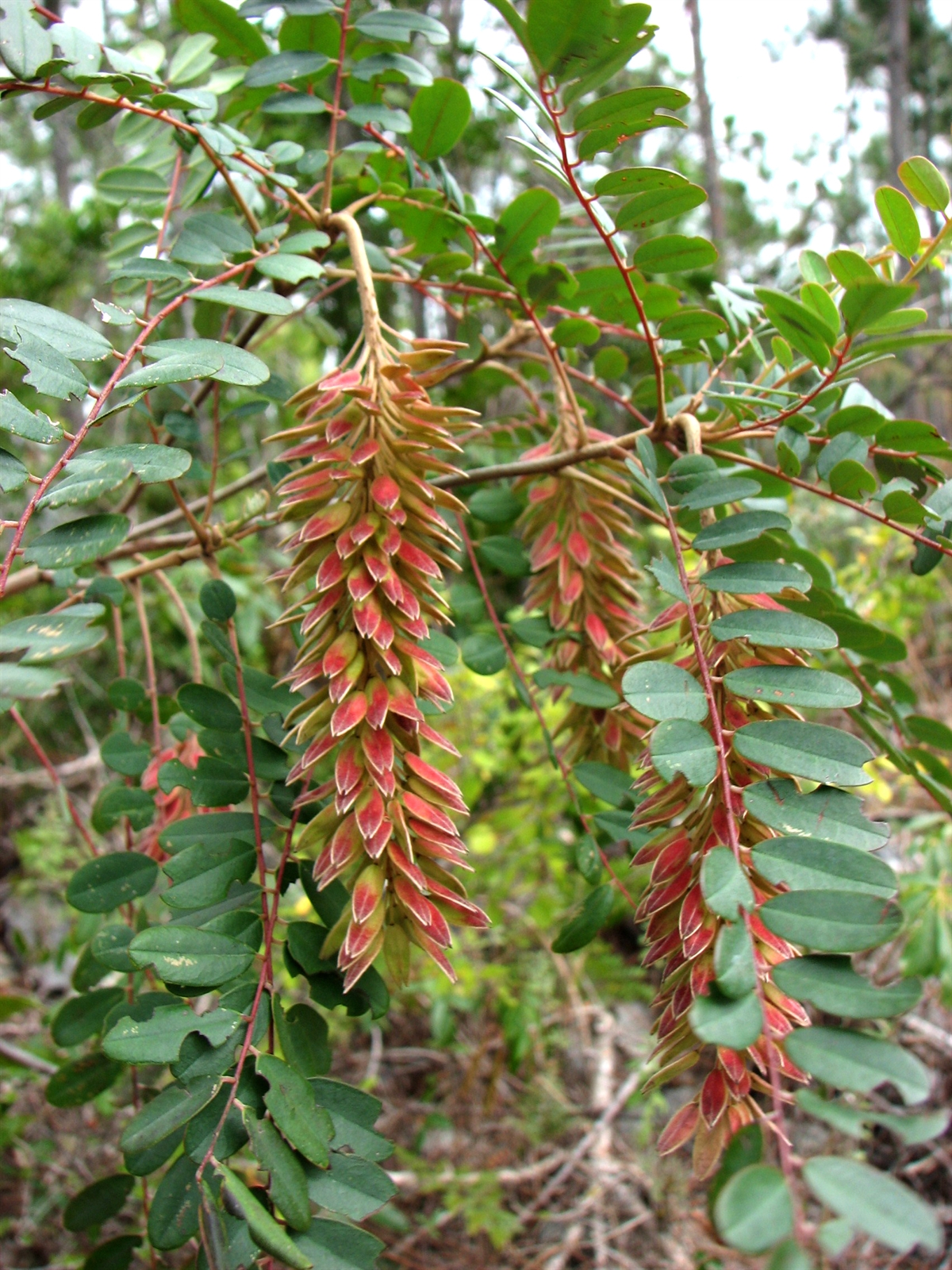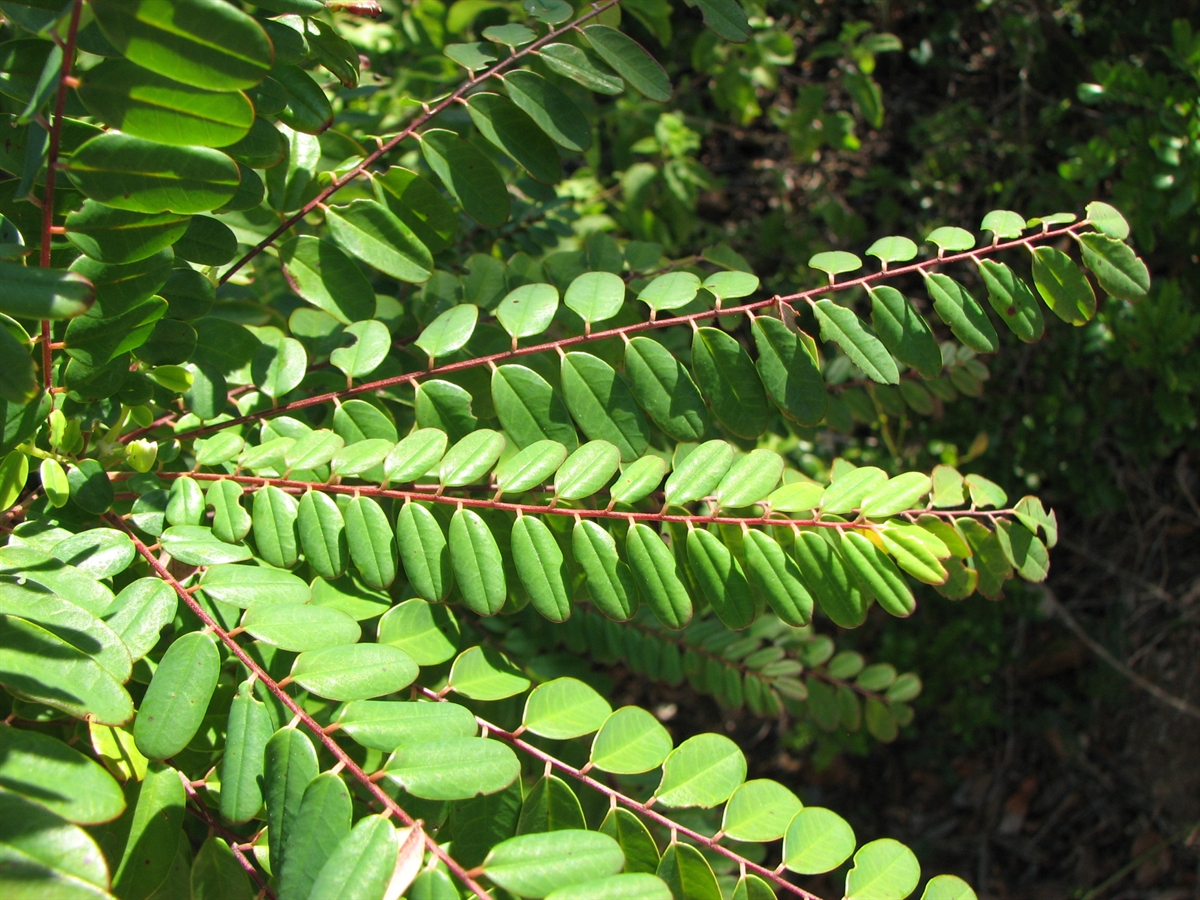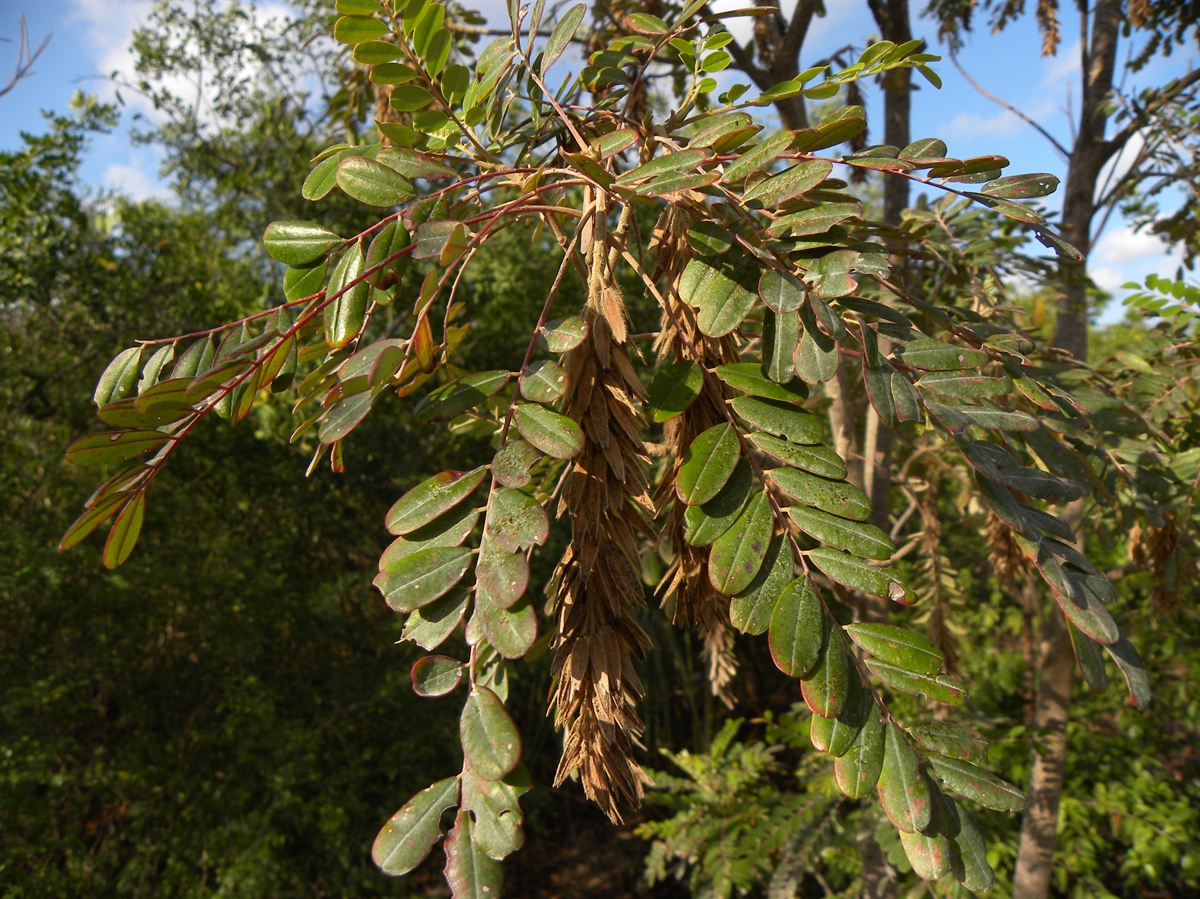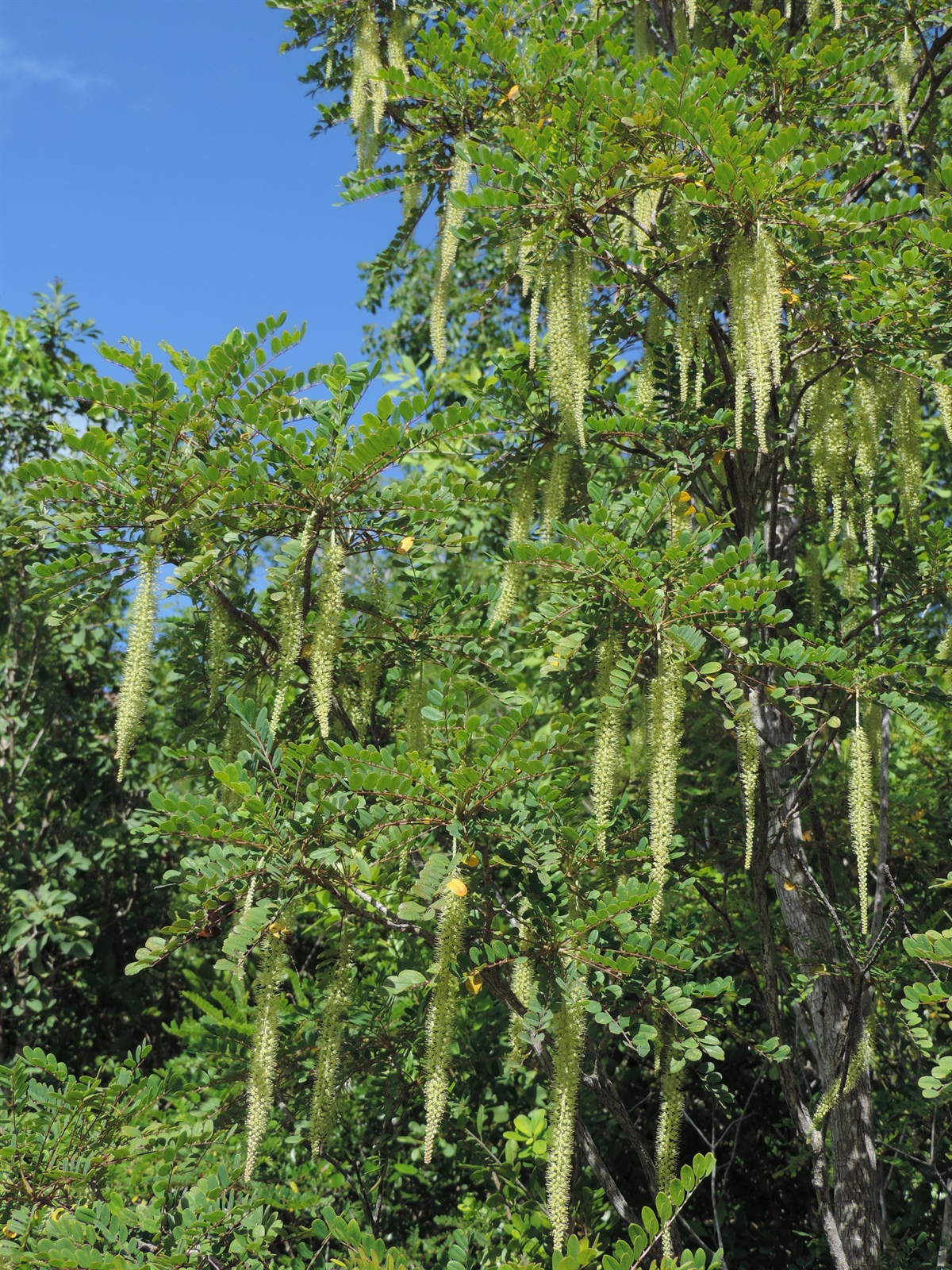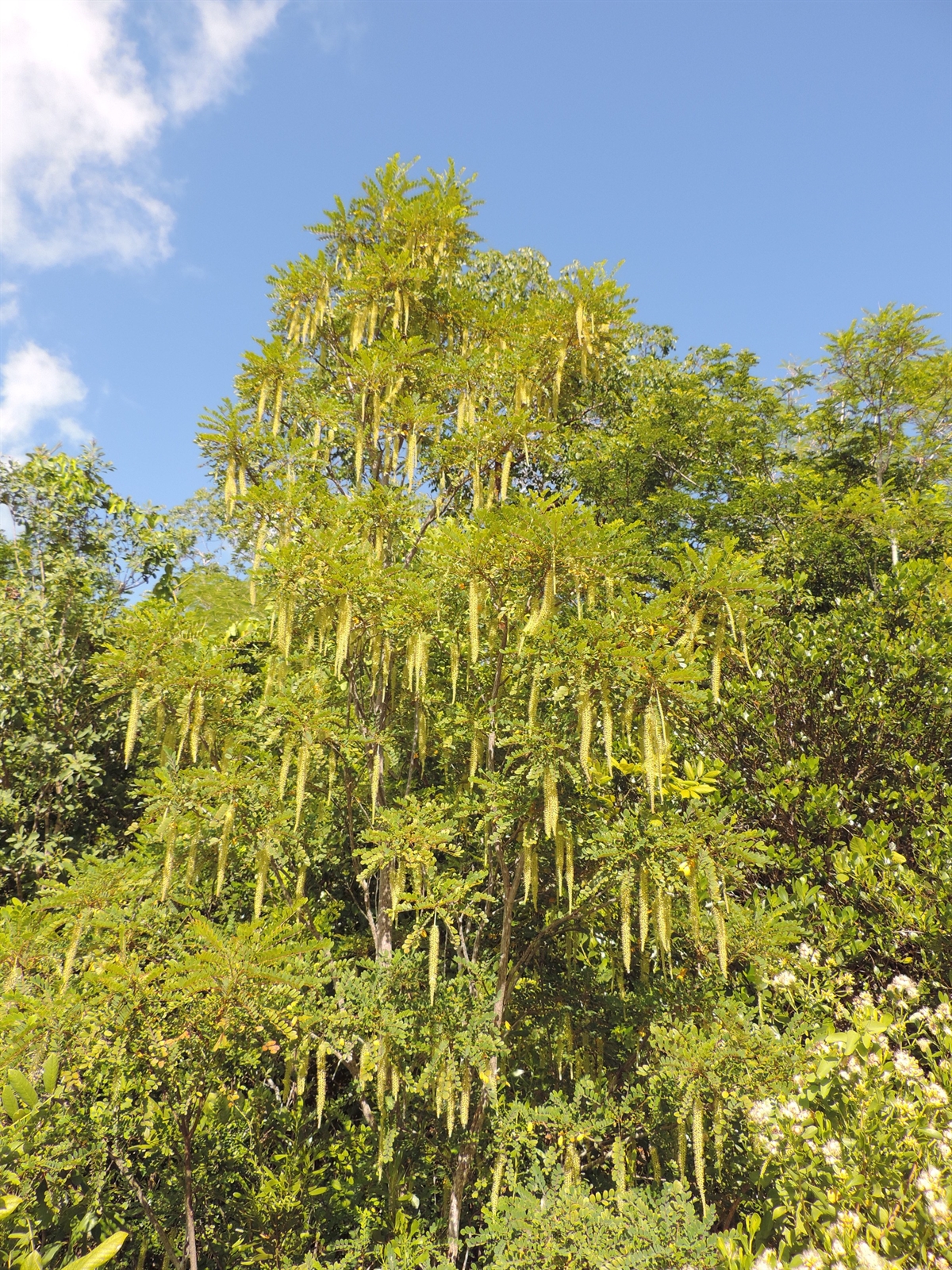Habit: Alvaradoa amorphoides grows as a large shrub to small tree up to 10 meters in height with pubescent branches. The compound leaves are arranged alternately, are odd-pinnate with 19 or more leaflets. The leaflets are light green, oval to oblong with a rounded or emarginate leaf apex and entire margin. The abaxial surface is pubescent.
The dioecious actinomorphic flowers are incomplete, imperfect and arranged in racemes. There is no calyx. There are 5 greenish-yellow petals. Staminate flowers have 5 functional and 5 non-functional stamens surrounding a non-functional ovary. Carpellate flowers have no stamens and a superior ovary with three locules and numerous seeds. The fruit is a samara, is covered with pubescence and turns reddish at maturity.
Habitat: Alvaradoa amorphoides grows in Dry Broadleaf Evergreen Formation – Woodlands or Shrublands (scrublands).
Distribution: Alvaradoa amorphoides occurs in the central and northern island groupings of the Lucayan Archipelago as well as Florida, the Caribbean region and Mexico south to South America
Medicinal/Cultural/Economic usage: Alvaradoa amorphoides is not used medicinally in the Bahamas.
It is used in the horticultural industry.
